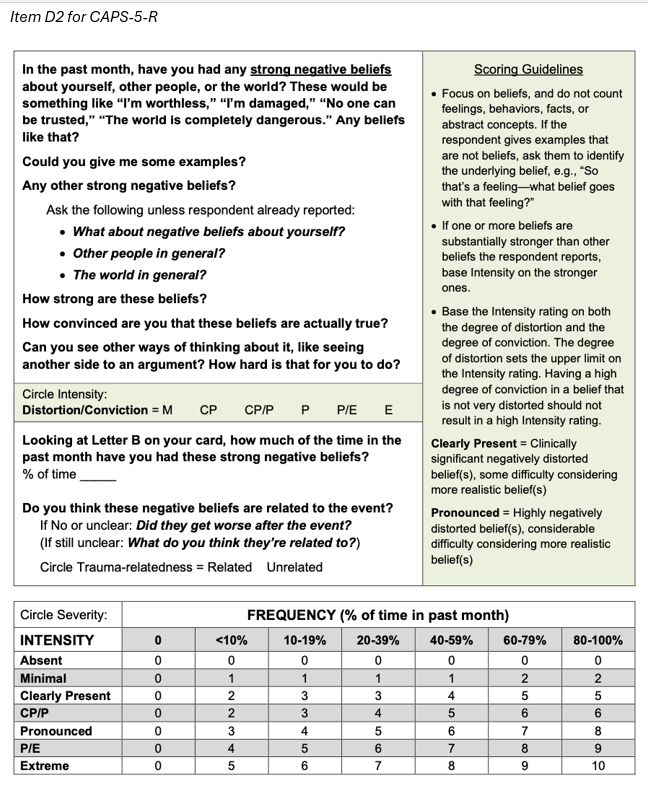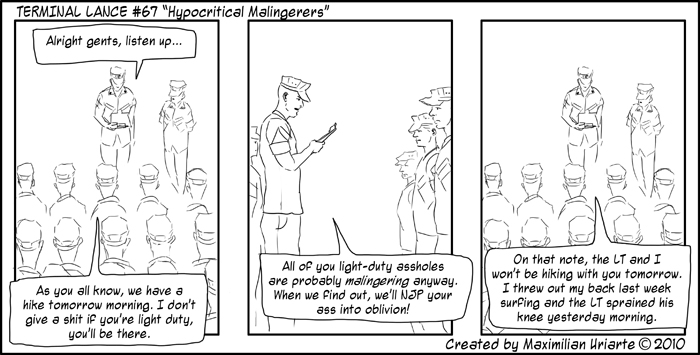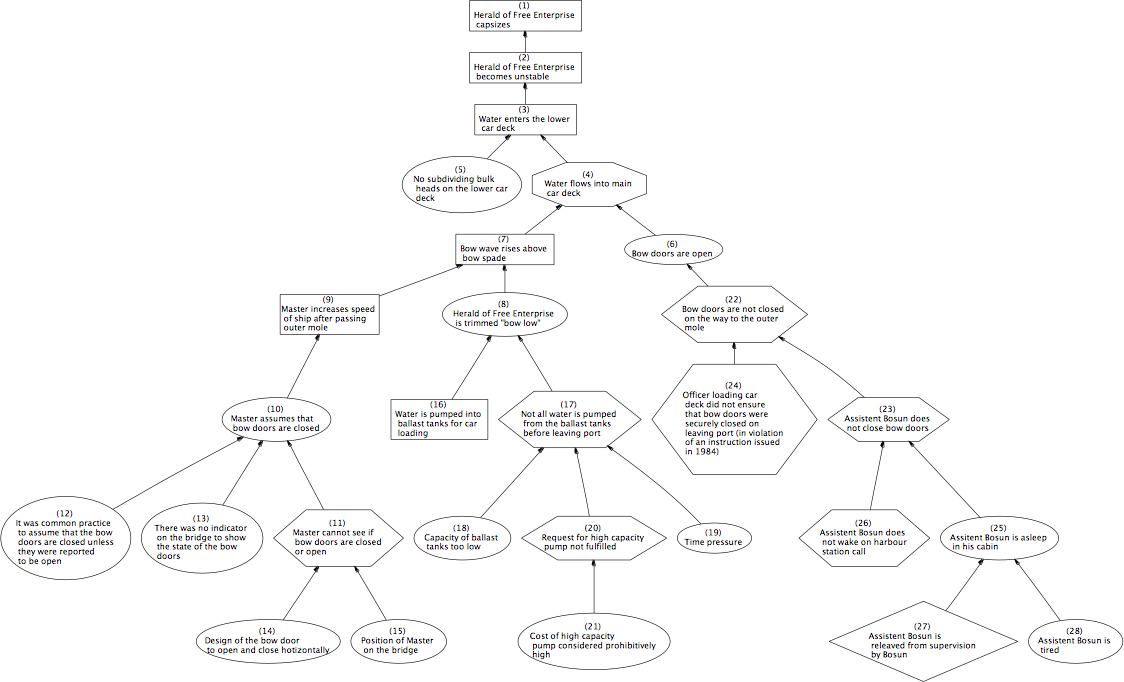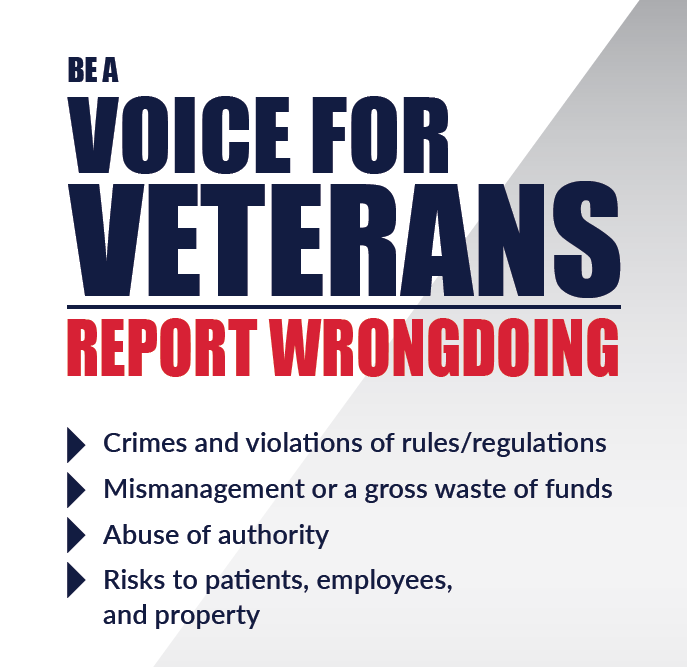- Home
- Psychologist & Psychiatrist C&P Examiners
- Suicidal ideation - DBQ
When Should C&P Psychologists Endorse Suicidal Ideation on the DBQ?
C&P psychologists (mental health examiners) report their compensation and pension exam findings on specially designed VA forms called Disability Benefits Questionnaires (DBQs).
Quick SummaryYou should endorse suicidal ideation on the Mental Disorders Symptoms List when:
These suggestions are consistent with the 2017 federal court opinion in Bankhead v. Shulkin. Please see below for a more comprehensive discussion. |
Suicidal Ideation and the Mental Disorder Symptoms List
An important section of every psychological DBQ is the mental disorder symptoms list. For Initial and Review Mental Disorder C&P exams, the symptoms list is in SECTION III: SYMPTOMS.2
One of the listed symptoms is "suicidal ideation", which is the subject of this article. When should the examiner endorse "suicidal ideation"?
That might (understandably) seem like an easy question, but it isn't because psychologist and psychiatrist examiners do not receive any guidance to know when to check off a particular symptom.
For example, imagine a veteran states that she feels "a little nervous" in most social settings, "but I usually force myself to go anyway and it's usually fine." Should the examiner check off "Anxiety"? There is not a definitive answer to that question.
How an examiner answers such questions has important implications for the veteran if she suffers from a service-related mental disorder.
Mental Disorder Symptoms List = VASRD
This list of symptoms is not arbitrary. Each symptom comes directly from the VA Schedule for Rating Disabilities (VASRD),3 specifically the General Rating Formula for Mental Disorders.4
The symptoms the C&P psychologist endorses often determines the veteran's disability rating5—assuming that VBA concludes that the mental disorder is service connected—because each symptom is associated with a disability rating level, i.e., 0%, 10%, 30%, 50%, 70%, and 100% as specified in the General Rating Formula for Mental Disorders.
For example, the symptoms associated with the 50% disability rating are:
- flattened affect;
- circumstantial, circumlocutory, or stereotyped speech;
- panic attacks more than once a week;
- difficulty in understanding complex commands;
- impairment of short- and long-term memory
- impaired judgment;
- impaired abstract thinking;
- disturbances of motivation and mood;
- difficulty in establishing and maintaining effective work and social relationships.
Does VA Provide Symptom Definitions or Guidelines?
New (and experienced) C&P psychiatrists and psychologists often ask a good question:
- "Are there any VA guidelines regarding when we should endorse a symptom such as depressed mood, impaired abstract thinking, or suicidal ideation?"
Unfortunately, the answer is "no".
If VA promulgated such guidelines it would likely constitute creating a new rule (regulation). VA must publish proposed new regulations in the Federal Register; invite public comment for 60 days; respond to those comments; and then decide if the regulation should definitely become an official VA rule that all concerned must follow.
If VA proposed modifying the regulations specifying criteria for each symptom on the "symptom list", and if those new regulations might result in lower disability ratings for veterans, the proposal would likely meet with opposition from veterans service organizations.
Any Non-Official Recommendations?
Marine Corps combat veteran Dr. Robert Moering and I wrote in a 2011 article:
We suggest that examiners endorse a symptom if it causes significant functional impairment. In the example given above, being “a little depressed” once or twice a week would probably not cause significant functional impairment; therefore, the “depressed mood” box should not be checked. On the other hand, if a veteran’s depressed mood caused them to disengage from meaningful social interactions and to become isolated, then the box should be checked.
This functional impairment approach to DBQ symptom endorsement is consistent with the overarching purpose of a C&P exam, i.e., to determine if a veteran suffers from a service-connected mental disability that causes him or her significant social and occupational dysfunction.6
Our suggestion works for many items on the mental disorders symptom list, but not all of them. And examiners should always pay attention to federal appellate court precedential7 decisions related to C&P exams.
Recently the United States Court of Appeals for Veterans Claims (CAVC) issued a precedential opinion in Bankhead v. Shulkin8 that C&P mental health examiners should review and take into consideration when completing the DBQ for PTSD and other mental disorders.
The case involved a veteran with service-connected Major Depressive Disorder for whom VBA had assigned a 50% rating. The veteran argued that he should have received a 70% rating due to chronic suicidal ideation—a symptom the General Rating Formula for Mental Disorders associates with the 70% level.
The Board of Veterans Appeals (BVA) supported VBA's decision, i.e., they did not agree with the veteran, so the veteran appealed to the CAVC (also known as the "Veterans Court").
The CAVC vacated the BVA decision and remanded the case back to the Board for re-adjudication consistent with the Veteran's Court opinion. I encourage you to read the entire opinion (it's not very long), but here are key quotes from the Court:
- "... the language of the regulation indicates that the presence of suicidal ideation alone, that is, a veteran's thoughts of his or her own death or thoughts of engaging in suicide-related behavior, may cause occupational and social impairment with deficiencies in most areas."9
- "The Board erroneously grafted risk of self-harm onto the symptom of suicidal ideation listed in the criteria for a 70% evaluation negatively impacting the Board's evaluation of Mr. Bankhead's service-connected major depressive disorder."10
- "... the Secretary effectively tapers 'suicidal ideation' from a broad continuum that encompasses both passive and active suicidal ideation into a narrow segment restricted to an intention to act or a specific plan to end one's life."11
- "... the Board wrongly imposed an external gauge, hospitalization, to determine that Mr. Bankhead's ideation was not so severe."12
Implications for Mental Health Examiners
As I mentioned earlier, I encourage C&P psychologists and psychiatrists to read the Bankhead opinion and take it into consideration when deciding whether or not to endorse "suicidal ideation" on the DBQ symptom list.
APA Ethics Code & Specialty Guidelines for Forensic Psychologists
For psychologists, the American Psychological Association (APA) Ethical Principles of Psychologists and Code of Conduct (EPPCC)13 and the Specialty Guidelines for Forensic Psychologists include principles or guidelines relevant to this question.
For example, C&P psychologists should understand the "... laws, rules, and precedents ... that guide the impact of their services on service recipients" (Specialty Guidelines for Forensic Psychologists, Guideline 2.04: Knowledge of the Legal System and the Legal Rights of Individuals).
In the past I would usually not endorse occasional suicidal thoughts without plan or intent to actually commit suicide.
But after the Bankhead decision I believe mental health examiners should, in most instances of a genuine report of such suicidal ideation, endorse "suicidal ideation" on the DBQ mental disorders symptom list, even if the veteran does not report a plan or intent to commit suicide.
But Why Should a Court Tell Us How to Practice Our Profession?
Some psychologists and psychiatrists might understandably ask, Why should a court tell us how to practice our profession?
I don't think the Veterans Court is telling us how to practice clinical-forensic psychology or psychiatry. But Bankhead does in my opinion obligate the examiner to thoroughly discuss a veteran's self-report of suicidal ideation and explain why the symptom was, or was not, endorsed on the DBQ mental disorder symptoms list.
Explain Why You Did—or Did Not—Endorse "Suicidal Ideation" on the DBQ
There are legitimate reasons for not endorsing "suicidal ideation" on the DBQ even when the veteran reports having suicidal thoughts. But the mental health examiner must explain her rationale. I will briefly discuss the two most common reasons.
a) The veteran shows signs of significant symptom exaggeration or feigning. Of course, this is a huge topic by itself, which is beyond the scope of this article. The most important point is that the examiner should have solid evidence of such exaggeration or feigning before basing subsequent decisions on this conclusion.
b) Note the Veterans Court's language in this quote:
- "... the language of the regulation indicates that the presence of suicidal ideation alone, that is, a veteran's thoughts of his or her own death or thoughts of engaging in suicide-related behavior, may cause occupational and social impairment with deficiencies in most areas" (emphasis added).
Thus, the Court did not presume that any suicidal ideation will always cause "occupational and social impairment with deficiencies in most areas."
Thus, one reason for not endorsing "suicidal ideation" would be that you do not believe it causes such significant impairment.
You need to carefully explain your rationale in such cases. (And this is an instance of why reading the Court's decision is so important.)
If I suspect that intermittent suicidal thoughts do not cause significant occupational and social impairment, but it is difficult to explain why—it's more of a hunch that a reasoned opinion—then I will endorse "suicidal ideation" on the DBQ mental disorder symptoms list.
Footnotes
1. I use the term "service-related" because determining if a veteran's injury or illness is "service-connected" is a decision made by an adjudicator, not the C&P examiner. For veterans disability benefits claims, the adjudicator is the Veterans Benefits Administration (VBA).
2. Some of the "symptoms" are actually signs, e.g., Flattened affect, Impaired judgement, and Neglect of personal appearance and hygiene. A symptom is an experience reported by the patient; a sign is something observable by others, which may or may not be recognized by the patient.
4. 38 C.F.R. § 4.130, see also Evaluation of disability from mental disorders, 38 C.F.R. § 4.126.
5. The Veterans Benefits Administration adjudicates all claims, thus the examiner does not make the decision regarding disability ratings. At the same time, the C&P psychologist's exam report, including the Mental Disorder Symptoms List, carries substantial probative weight.
6. Mark D. Worthen & Robert G. Moering, A Practical Guide to Conducting VA Compensation and Pension Exams for PTSD and Other Mental Disorders, 4 Psʏᴄʜᴏʟ. Iɴᴊ. & L. 187, 192; doi:10.1007/s12207-011-9115-2, https://bit.ly/ptsd-exams
7. Oxғᴏʀᴅ Eɴɢʟɪsʜ Dɪᴄᴛɪᴏɴᴀʀʏ (OED Online) (3rd ed. 2007) http://www.oed.com/view/Entry/149579 ("precedential, adj. - Of the nature of or constituting a precedent; providing a guide or rule for subsequent cases.").
8. Bankhead v. Shulkin, 29 Vet. App. 10 (2017); No. 15-2404 (CAVC May 19, 2017); see also Stuart J. Anderson, The Board May Not Consider Risk of Self-Harm or Hospitalization in Gauging the Severity of Suicidal Ideation, Vᴇᴛᴇʀᴀɴs L. J., Summer 2017 at 8, http://cavcbar.net/bawp/wp-content/uploads/2018/03/VetsLJ17Su.pdf.
9. Bankhead v. Shulkin, No. 15-2404, slip op. at 11 (CAVC May 19, 2017).
10. Id. at 11.
11. Id. at 12.
12. Id. at 12.
13. Aᴍᴇʀɪᴄᴀɴ Psʏᴄʜᴏʟᴏɢɪᴄᴀʟ Assᴏᴄɪᴀᴛɪᴏɴ, Eᴛʜɪᴄᴀʟ Pʀɪɴᴄɪᴘʟᴇs ᴏғ Psʏᴄʜᴏʟᴏɢɪsᴛs ᴀɴᴅ Cᴏᴅᴇ ᴏғ Cᴏɴᴅᴜᴄᴛ (2002, rev. 2017), https://www.apa.org/ethics/code/ethics-code-2017.pdf
14. American Psychological Association, Specialty Guidelines for Forensic Psychology, 68 Aᴍ. Psʏᴄʜᴏʟ. 7 (2013), https://www.apa.org/pubs/journals/features/forensic-psychology.pdf
Subscribe to receive new articles and other updates
What Do You Think?
I value your feedback!
If you would like to comment, ask questions, or offer suggestions about this page, please feel free to do so. Of course, keep it clean and courteous.
You can leave an anonymous comment if you wish—just type a pseudonym in the "Name" field.
If you want to receive an email when someone replies to your comment, click the Google Sign-in icon on the lower right of the comment box to use Google Sign-in. (Your email remains private.)
↓ Please comment below! ↓





